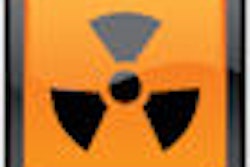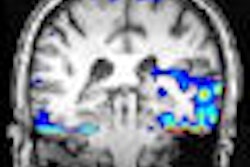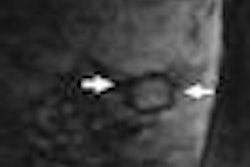Dual-energy x-ray absorptiometry (DEXA) exams can help identify bone mineral density reduction in children diagnosed with cystic fibrosis as young as age 5, according to researchers from Italy.
Researchers from Bambino Gesù Children's Hospital in Rome found that DEXA can help direct early intervention to prevent osteopenia, a condition that adult cystic fibrosis patients often develop. Their study was published September 28 online in BMC Pediatrics (2009, Vol. 9:61).
Pediatricians and endocrinologists at the hospital's cystic fibrosis unit analyzed 82 consecutive patients treated between July 2007 and July 2008 to determine if there was a correlation between their clinical condition, bone status, and body composition parameters. Forty-two boys and 40 girls participated in the study, ranging in age from 5 to 30 years. The patients were categorized into three groups: prepubescent children (32.9%), adolescents from the onset of puberty to age 18 (54.9%), and young adults 18 to 30 years old (12.2%).
None of the patients had histories of bone or vertebral fractures or were taking bone-sparing drugs. All were on unrestricted high-caloric diets, took an oral multivitamin preparation, and received inhaled steroids.
A control group of 82 healthy patients were recruited for the study, matched exactly by age, gender, height, and pubertal stage for each cystic fibrosis patient. The mean lumbar spine bone mineral density z-scores and mean lumbar spine bone marrow apparent densities of the control patients were significantly different from those of the cystic fibrosis study cohort.
Thirty-seven, or 45.1%, of the cystic fibrosis patients had normal bone mineral density, but the researchers identified bone mineral density reduction in 45 patients or 54.8% of the total.
The severity of bone mineral density reduction seemed to be directly correlated to the clinical severity of the chronic illness, according to lead author Dr. Vincenzina Lucidi of the hospital's department of pediatric medicine. Patients with mild and severe bone marrow density reduction had worse pulmonary function, body composition, and nutritional status.
The authors suggested that early identification of bone mineral density reduction will enable physicians to initiate treatment to maximize nutritional status and minimize the progression of chronic suppurative lung disease.
Related Reading
Poor bone mineralization starts early in children with cystic fibrosis, May 7, 2007
Bone mineral density not tied to spinal fractures in cystic fibrosis, August 16, 2006
Copyright © 2009 AuntMinnie.com



















